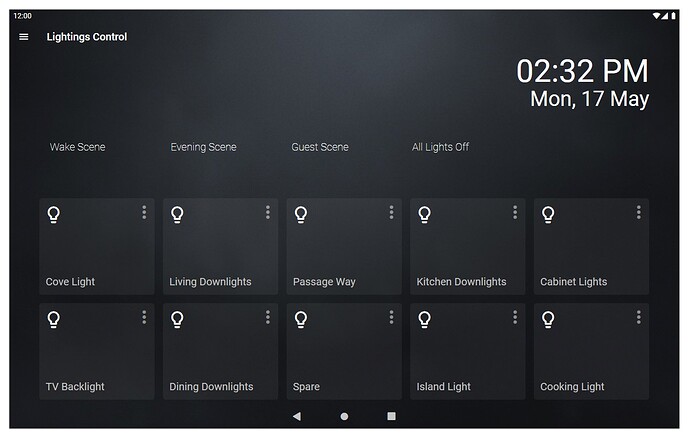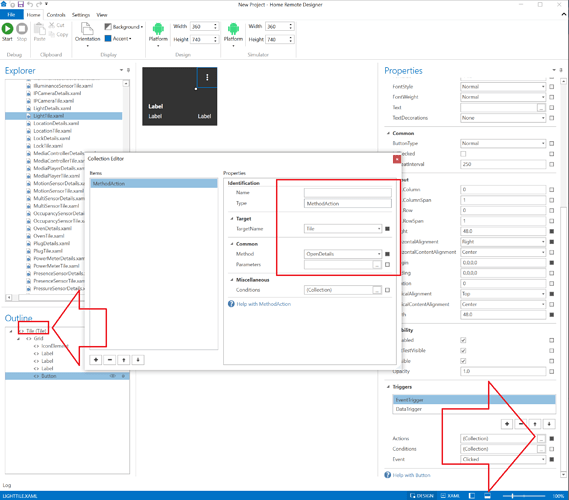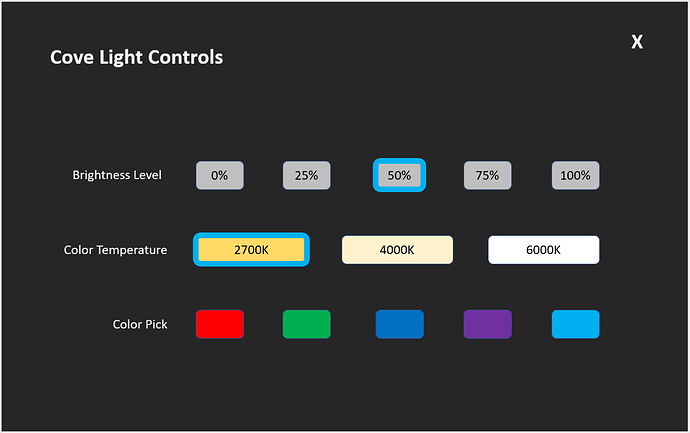I am halfway through with the dashboard but currently stuck with a specific feature. I have managed to set triggers to switch ON/OFF the lights (see below).
How do I open up the light details (to control the dimming, color temp., pick color, etc.) when I click on the 3-dots of each tile? I did not use the default light tile template. I customized them.
And instead of using the dimmer slider, color picker and color temperature picker, can I create buttons to represent each of the specific control parameters? for example: 30% brightness button, 60% brightness button, 100% brightness button, Warmwhite button, coolwhite button, daylight button, blue color button, red color button, etc. ?
Appreciate any advice. Thanks!





